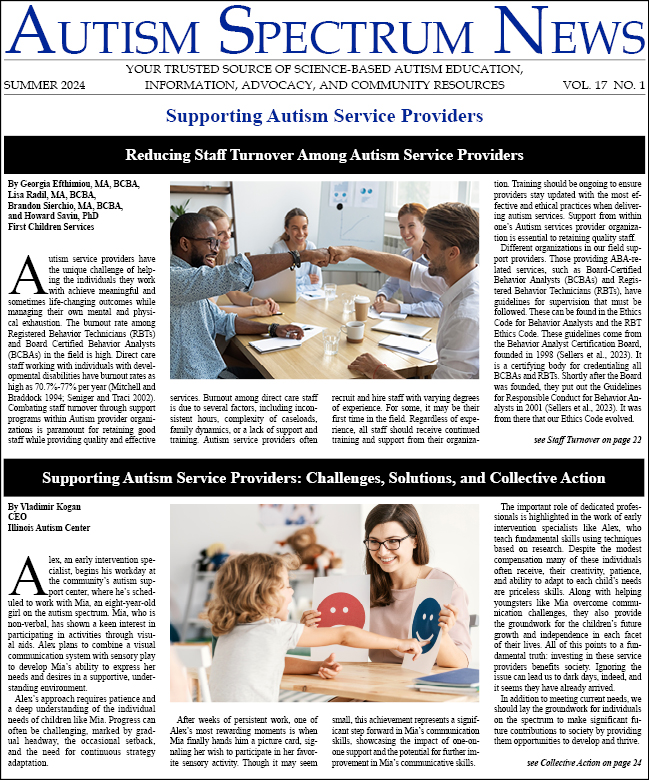-
Preparing Autism Service Providers for Natural Disasters and Other Emergencies
When confronted with an emergency, people with autism spectrum disorder are at a greater risk for injury or death than their neurotypical peers. Many autistic children and adults lack safety awareness or the ability to follow basic safety rules. Even if they have these critical skills, each...
-
Reaching Ukraine: Occupational Therapy-Centered Training to Support Children with Autism Spectrum Disorder in Kyiv
In the Eastern European country of Ukraine where there are more than 44 million residents (Archer, Harper, & Cameron, 2020), there are just 3 ergotherapists (Ukrainian translation for occupational therapists) in practice (Imas & Lazarieva, 2017). Though Ukrainian health officials recognize...
-
Hiring People with Disabilities as Direct Support Staff – AHRC NYC Advance & Earn Provides Training and Support for NYC Youth With and Without Disabilities
“He has this desire to learn.” “I knew he was personable and had the temperament for the job.” These are the words of some AHRC New York City staff describing Alex DeCarlo, a Direct Support Professional (DSP) who brings a unique perspective to his colleagues and the people with...
-
A Call to Action: The Need for Advocacy in Healthcare Access in Autism
Although specific estimates vary substantially, autistic children and adults have a higher prevalence of comorbid medical conditions than those reported in non-autistic individuals. Among the most commonly reported comorbid medical conditions are neurological disorders, including epilepsy,...
-
Recognizing and Understanding Neurodiversity in Couples
Many couples come to the realization they are in a neurodiverse relationship decades into their relationship, after listening to a podcast, reading a book, or watching a movie that includes an autistic character. But recognizing neurodiversity is just the beginning... Then what? How does...
-
Implementing Peer Support Arrangements in Schools
Students with autism often require support in developing communication, social, and academic skills (Chan et al., 2009). One treatment approach, peer-mediated intervention (PMI), utilizes neurotypical peers to support students with autism in building these skills (Laushey & Heflin, 2000)....
-
Innovations in Scaling Up the Use of Evidence-Based Practices in Public Schools
High quality implementation of evidence-based instructional and intervention strategies has been identified as critical for educators supporting autistic students. Using evidence-based practices (EBP) is required by policy (Every Student Succeeds Act [ESSA], 2015, and the Individuals with...
-
Guidelines for a More Neurodiversity-Affirming Practice for Autism
This article came out of discussions between the authors about guidelines for a more neurodiversity-affirming practice for autism. The training that is discussed in this article was developed by the first author (Rebecca Rosenzweig). Authors’ note: As an autistic person working in a...
-
Educating First Responders to Improve Encounters with Autistic Individuals
It is estimated there are more than 3.5 million Americans living with autism spectrum disorder (ASD) and the number continues to grow.1 According to CDC statistics, the prevalence of autism has increased from 1 in 150 children born in 2000 to 1 in 54 as of 2020.2 This expanding segment of the...
-
AHRC NYC’s Laura McCabe, BCBA, Urges Teachers to Keep an Open Mind and Give Students a Chance to Change
The following is an interview with Laura McCabe, BCBA, Coordinator at AHRC New York City’s Middle High School. What made you decide to go into this field? Did you always know you wanted to work with students on the autism spectrum? I was always interested in understanding the human mind...





